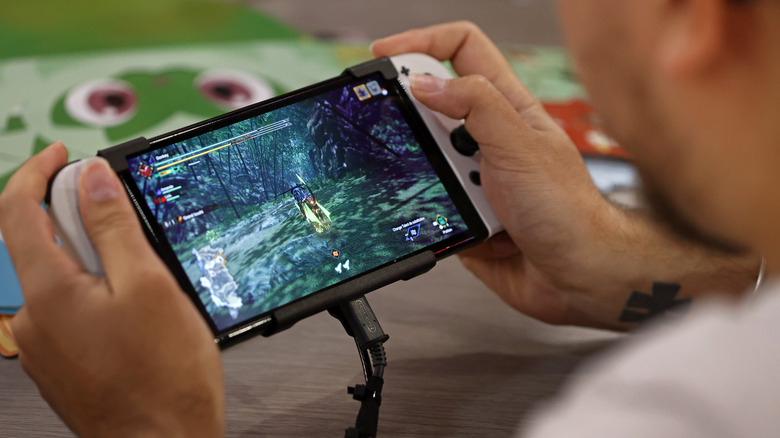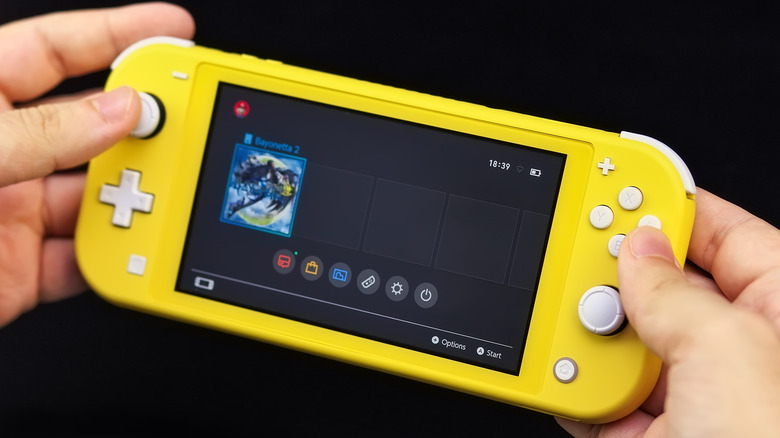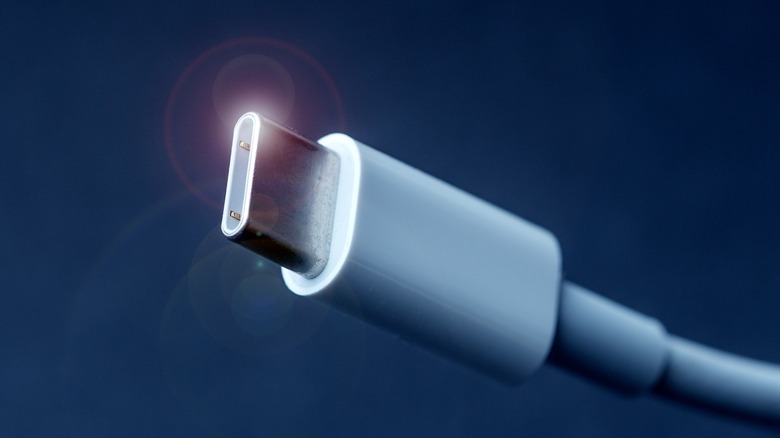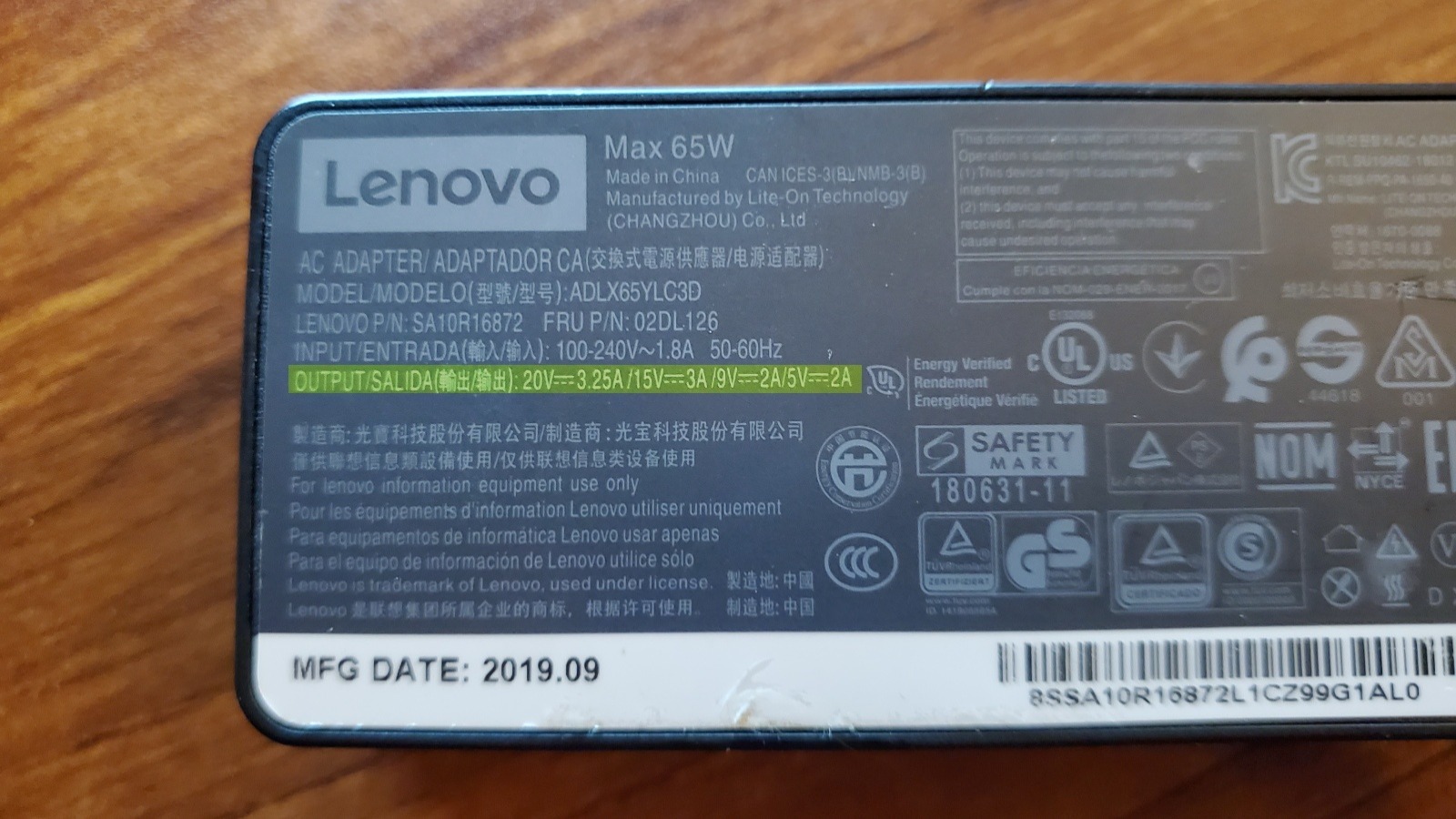Is It Safe To Use A Phone Charger To Charge The Nintendo Switch?
Nintendo designed the Switch to use the same USB-C charging connector you likely use to charge your phone, headphones, and maybe even your laptop. That's a good thing, as it means you can easily find a new charging cable in a pinch if you've forgotten or misplaced the Original Equipment Manufacturer (OEM) charger. However, as with any device, Nintendo recommends that its customers only use the official USB-C charger that ships with the Switch or one specifically licensed for the console. The reason for this is simple: though they may look identical, not every charger is built the same. Your experience with a third-party alternative may vary.
If you use a charger that doesn't have a high power output, for example, it may take days to fully recharge your Switch — or it may not charge at all if you're playing games while it's plugged in. This is often the case with ordinary smartphone chargers. On the flip side, the consequences of using a third-party charger may be severe. Using a fast charger that doesn't properly regulate its energy output could damage your device or cause the battery to overheat.
In most cases, you can use your phone or tablet charger to recharge the Nintendo Switch due to how the USB Power Delivery specification is designed. Many Switch owners report doing this. The bad news is that Nintendo didn't fully adhere to that power delivery protocol, so it may also be possible to overcharge the console if you don't use the Nintendo-branded (or licensed) charger.
Nintendo Switch charger specs
The Nintendo Switch comes in three varieties: the regular Switch, the Switch OLED, and the Switch Lite. The first two consoles — the Switch and Switch OLED — have the same charging specifications, but the smaller Switch Lite requires a bit less power. Nintendo ships the Switch consoles with a 39-watt USB-C Power Delivery (PD) AC adapter that is designed to deliver 15 volts/2.6 amps and 5 volts/1.5 amps. With these specs, you may find that the Switch charger also works well for recharging your tablet, smartphone, and possibly your laptop if it's an Ultrabook.
If you look at the specs for your smartphone, tablet, or laptop charger, you may notice that they have a higher wattage than the Switch's 39W AC adapter; many come in 45W, 65W, and even 100W and 240W varieties. That doesn't necessarily mean you can't use these chargers with the Switch, however, due to the technology introduced with USB-C.
Put simply, USB-C PD chargers are inherently smart in the sense that they can adjust to meet the demands of gadgets, including ones that aren't designed to utilize their full charging potential. The charger may go up to 65W, for example, but the Switch won't get that full load and will instead only get the power level it requires to safely and quickly recharge. The USB Implementers Forum describes this design as "flexible," explaining that the current USB Power Delivery 3.1 specification is able to "optimize power management across multiple peripherals by allowing each device to take only the power it requires ...," among other things.
Is it safe to charge a Nintendo Switch with a phone charger?
The good news is that you can use many USB-C chargers on the market to recharge your Nintendo Switch. For example, Satechi explains on its support website that it's safe to use the company's 108W Travel Charger, noting that the 90W port on the charger will automatically deliver the 15V/2.6 amps the console utilizes. Things get a bit complicated when you start looking into charging profiles, however.
Put very simply, a charging profile refers to the details the charger uses to optimize charging the device it is plugged into (via Delta Q). Some third-party chargers, particularly ones that are cheaply made, may not have the right charging profiles to properly charge your Nintendo Switch. This could result in a situation where the power output isn't being managed well and that, in turn, could potentially lead to a battery that degrades faster or possibly even damage the console.
There are also some concerns that because the Nintendo Switch doesn't fully meet the USB-C specification, it may be possible to overcharge it, unlike newer devices that were designed to fully adhere to the PD protocol. Though the original post was lost with the Google+ shutdown, a Reddit post archived an analysis of the Nintendo Switch port conducted in 2017 by a tester known as Nathan K., who said that it is potentially possible to overcharge the Switch console by up to 300% due to its failure to properly negotiate the power output it needs from the charger (via Switch Chargers). Many Switch users report successfully using their USB-C laptop and phone chargers with the console, but given the possible consequences, your best bet is sticking with the OEM and licensed chargers sold by Nintendo.



